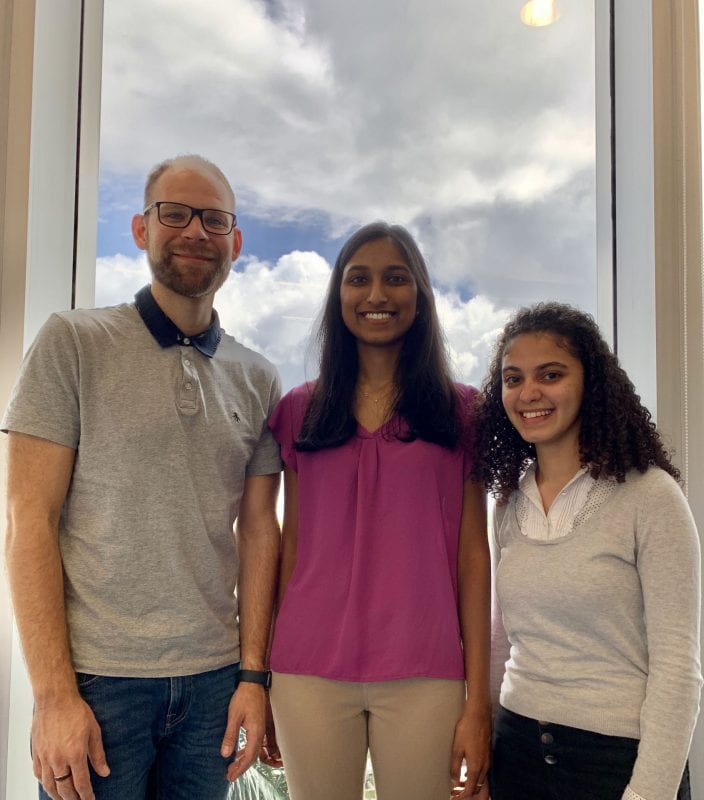Peer-Reviewed Article Features Two Undergraduates as Primary Authors

Recently, the journal Microbes and Injection published the article, “A potential tradeoff between feeding rate and aversive learning determines intoxication in a Caenorhabditis elegans host-pathogen system”.
In this manuscript, a research team composed of seven undergraduate students examined the interplay between attraction and avoidance in the worm C. elegans. Using infective bacteria engineered to make an attractive odor, the group examined how the level of attraction determines the ability of the bacteria to infect the worms. They observed that if the bacteria are too attractive, the worms quickly learn to avoid the bacteria, and infection is reduced. Conversely, if the bacteria are not attractive enough, the worms are not attracted to the bacteria, and infection is reduced. However, if the attractiveness of the bacteria is between these two extremes, the bacteria are able to cause a high degree of infection in the worms, suggesting a ‘Goldilocks’ region of attractiveness. The work might shed light on the evolutionary constraints that bacteria and other infective agents face when trying to infect a potential host.
The research of Halmos faculty member Robert Smith, Ph.D. (senior and corresponding author) focuses on understanding and manipulating bacterial cooperation, antibiotic resistance and host-microbe interactions using multidisciplinary approaches. Halmos faculty member Christopher Blanar, Ph.D. is also an author on this paper.
Citation: Velagapudi Pallavi, Rachel Ghoubrial, Ratnavi Shah, Helana Ghali, Meghan Haas, Krunal S. Patel, Ashleigh Riddell, Christopher A. Blanar, and Robert P. Smith. (2020).”A potential tradeoff between feeding rate and aversive learning determines intoxication in a Caenorhabditis elegans host-pathogen system.” Microbes and Infection.
